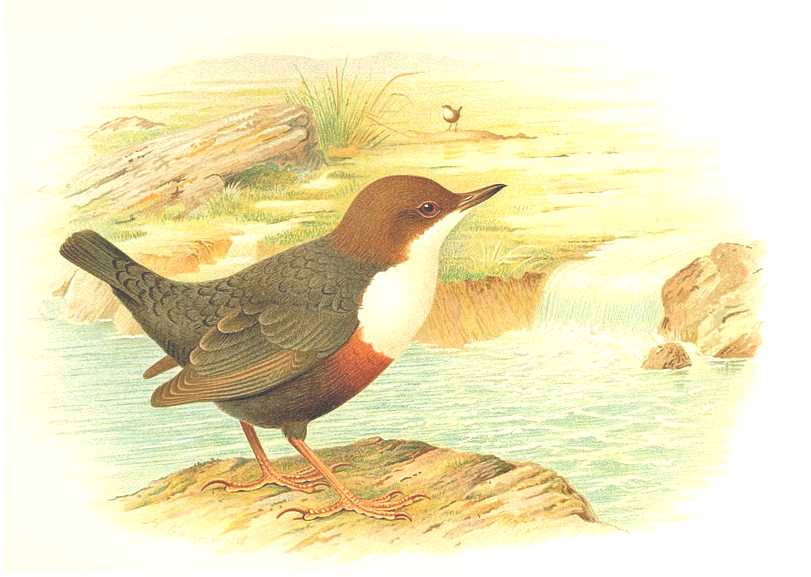White-throated dipper
These are small , but lumpy. strong birds, living near fast-moving freshwater streams with a stoney underground.. They are capable to dive and swim under water, using there short powerful wings. These wings are not very suited for flying, they fly clumsy, but dippers are fast swimming divers.

illustration made by Hendrik Gronvold (1), depicting the dipper near a fast-flowing brook.
Adapted to the water
White-throated dipper is adapted to diving : flaps near the nose prevent the water entering the nose;The feathers are thick , they are more suitable for swimming then diving. The wings are short, but musculair. The legs and claws are strong and long. These claws are used to keep grip on the rocks. The blood has a high content of red blood cells, extending the period that this bird can dive. Their weight is increased by having dense bones , making diving more easy , but flying harder.
White troated dipper, Grey wagtail, and a flowering creeping bellflower on an illustration from Thorburn.
Dipper food.
During summertime they feed mainly on waterinsects , like the nymfs of mayflies. larvae of flies, and small fish. During wintertime crustaceans, freshwater amphipods and mollusc are eaten, a typical and preffered prey is the scud gammarus pulex,.
White-throated dipper distribution
They can be found in the highlands of southern Europe, Norway, British Islands, Kaukasus, Atlas mountains (Africa) , Ural mountains and the highlands of Iran (Asia). IDuring the summertime they can also be found in the Baltic States, they fly to the south in the autumn. The Cashmir dipper is an important subspecies , and can be found in the Himalaya mountains from Pakistan to Sikkim , The Prezewalskii dipper is a subspecies in south Tibet and the highlands of Central China. The overall population is stable , but some of the smaller subspecies have dissapeared.
dipper breeding
The nest is near or overhanging the brook. Its is loosely build : in the upper part is a shelter , beneath the nest : When the youngs are in danger they drop into the water and dive. There are up two broods a year , with mostly three eggs.
Reference:
Hendrik Gronvold (1)

